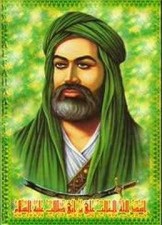Vali Nasr ولی رضا نصر ![]()
W.W. Norton & Co. (2007, first edition 2006), 240 pages
Borrowed
Islamic History & Politics ![]()
Even though The Shia Revival: How Conflicts within Islam Will Shape the Future was published in 2006 it is still relevant given the current clashes between Shia and Sunni Islam in Syria and Iraq. For those unfamiliar with Shia Islam, Nasr offers an explanation of the reasons for the Sunni and Shia split following the Prophet Muhammad’s death in 632. Sunni Islam perceived the minority Shias in, perhaps, a similar way that Protestants viewed Catholics, as having strayed from the original truth of the religion and added in innovations such as the worship of saints (as in the veneration of Hussein), the mourning period of Ashoura, and the belief in the Hidden Imam. Religious antagonism is nothing new but there is a big difference between referring to someone as a heretic and then actually trying to kill them. For Sunnis, “In a pattern of behavior that would be repeated throughout the centuries down to the present, the Shia bore the brunt of popular frustrations with the failures of Sunni rulers. Treated as the enemy within, they were the first to come under suspicion when there was an external threat to the ruling Sunni establishment.” (p.53) The current abuse of religious minorities in Pakistan (in some cases while the police stand idly by) can be seen as popular frustrations with a failed system of government being relieved at the expense of minority groups.
Nasr highlights the role that modern political structures in the Middle East have played in leading to Sunni and Shia violence that has increased in recent years. Religion has been used as a political football by numerous rulers in the region. The rise of secular Nassarism led to the suppression of religious outpourings in Egypt (a trend that continues today albeit in a modified form) and the leadership of secular Ba’athist parties in Syria and Iraq. There was less friction between Sunni and Shia during this “secular” period as both groups recognised the need to unite (or at least not attack each other) behind an Islamic banner. Ironically the Shia Alawite sect suppressed the majority Sunni population (through control of the army) whilst the Sunni minority in Iraq suppressed the Shia majority. The overthrow of the Iranian Shah led to the rise of Ayatollah Khomeini’s hardline Shia regime and increasingly bitter disputes between the leading Shia (Iran) and Sunni (Saudi Arabia) nations. The civil war in Lebanon, the current civil war in Syria, and the escalation of violence in Iraq can, in some ways, be viewed as proxy wars for control of the heart of Islam.
Nasr is clearly no fan of Ayatollah Khomeini. He sees Khomeini as an abberation with the true face of Shia Islam being represented by hugely important Ayatollah Sistani who essentially believes, “…the rule of law and democracy as compatible with religious teachings, provided secular laws did not impugn Islamic law or infringe on Shia interests.” (p. 122) Khomeini, however, believed in “guardianship of the jurist” which meant that an Islamic government should be led by clerics. The violence that followed the Iranian Revolution turned many Iranians against the new regime. The hardline religious police are hated by many ordinary Iranians and the Basij militants who enforced the crackdown following disputed elections in 2009 are viewed as thugs who discredit the Iranian people. Such direct involvement in the ruling of the state is anathema to those that follow the path of Sistani who, “…limited the role of Islam to providing values and guidelines for social order…” (p.173).
The main change since The Shia Revival’s publication has been the Syrian Civil War. Lebanese Hezbollah, although Shia, had traditionally downplayed sectarian differences. Hezbollah had gained popularity throughout the Muslim world for their attacks on Israel in south Lebanon and their anti-Americanism. That has completely changed since the increasingly bitter sectarianism that sprang from toppling of Saddam Hussein has grown roots across the region. Hezbollah, by directly intervening on Bashar al-Assad’s side, has lost most of their Sunni supporters. Far more deadly has been the increasing power of Salafi militants in North Africa and the Middle East. A botched US led de-Ba’athification campaign, the failure to rebuild basic infrastructure, the sectarian policies of Nouri al-Maliki, and the failure of the US led Coalition to protect Sunni or Shia from atrocities have all created an environment ripe for extremism. Nasr believes that the seeds of the rise of Salafi extremism in Iraq took place when sanctions reduced the Iraqi regime’s ability to fight extremism. Nasr clearly believes that the a civil war in Iraq could destroy any chances of democracy spreading in the Middle East, “A Shia-Sunni civil war would destroy America’s project in Iraq far more quickly and thoroughly than al-Qaeda’s terrorism could by itself.” (p. 243) As Iraq verges closer to becoming a failed state (whose army is such a failure that the Prime Minister has called on citizens to fight off ISIS militants), and Syria continues to drown in blood, The Shia Revival is an important key to understanding the region.
8/10


